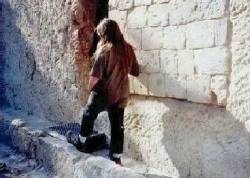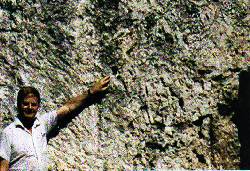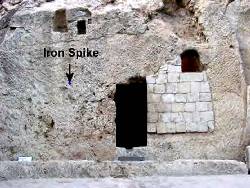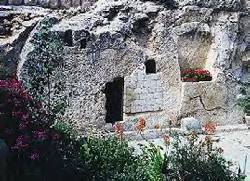The Bible records that the Romans set a guard over the Garden Tomb, “On the next day, which followed the Day of Preparation, the chief priests and Pharisees gathered together to Pilate, saying, “Sir, we remember, while He was still alive, how that deceiver said, ‘After three days I will rise.’ Therefore command that the tomb be made secure until the third day, lest His disciples come by night and steal Him away, and say to the people, ‘He has risen from the dead.’ So the last deception will be worse than the first.”

Almost certainly the Roman soldiers sealed the Great Stone with a chain or rope, probably using a Roman insignia as well. The Garden Tomb was designed so that the Great Stone moved from left to right, across the entrance of the Tomb. There was a limestone buttress to prevent the stone moving any further to the right. The Great Stone was so large that it almost certainly required several men to move it.

The stake is still present, about 6 feet to the left of the entrance to the Tomb. It is actually a metal stake, covered in lead. This is entirely consistent with the type of stakes used by the Romans during this period. Unfortunately the stake originally to the right of the Great Stone is no longer present, since part of the original Garden Tomb has crumbled away, and has been replaced with more modern limestone bricks.
A photo of Jonathon Gray, an archaeologist from Australia, actually touching the metal stake.

Ron measured the distance between the stake and the buttress, and found the distance to be 13 feet 2 inches. This was exactly the diameter of the great stone Ron had discovered at the base of the Calvary Escarpment, at the Crucifixion site.
Ron then knew beyond any doubt that the Great Stone which he had discovered during his excavation was in fact the identical Great Stone of Mark 16:3-4.
